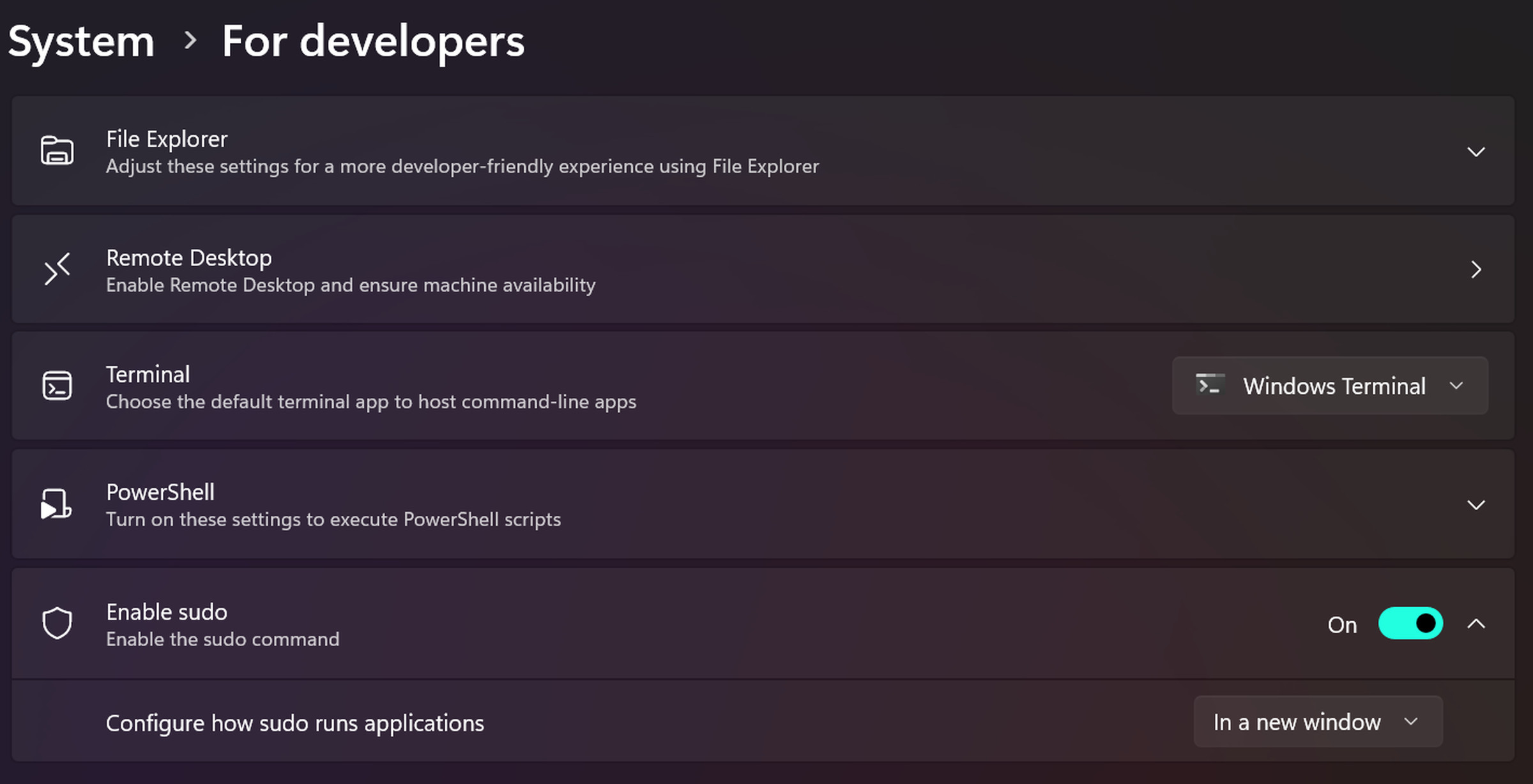Microsoft continues to embrace Linux and make Windows a home for developers.
Share this story

Windows 11 will soon have a built-in sudo command designed for developers. Sudo, short for “superuser do,” is widely used on Unix-based operating systems like Linux and macOS to run programs with higher security privileges or as another user. It’s useful for developers wanting to test scripts, for example.
Microsoft is using sudo inside Windows to let developers run elevated tools directly from an unelevated console session. “It is an ergonomic and familiar solution for users who want to elevate a command without having to first open a new elevated console,” explains Jordi Adoumie, a product manager at Microsoft.


Sudo is being tested as part of the latest Canary build of Windows 11 today, so it won’t be available to regular versions of Windows 11 until later this year. Microsoft will allow the sudo command to be configured in three modes: a new window, with input disabled, and inline. The most similar mode to Linux’s sudo is inline, whereas the other modes lock down things more.
“Over the coming months we will be working on expanding documentation for Sudo for Windows and will be sharing more details about the security implications of running sudo in the ‘Inline’ configuration,” says Adoumie.
Microsoft is also open-sourcing this sudo project on GitHub, and plans to share more about the plans for sudo in the coming months.
The addition of sudo comes years after Microsoft fully embraced Linux by shipping a full Linux kernel in Windows 10. The software maker has also added the Bash shell to Windows, native OpenSSH in Windows 10, and even brought Ubuntu, SUSE Linux, and Fedora to the Windows Store.









